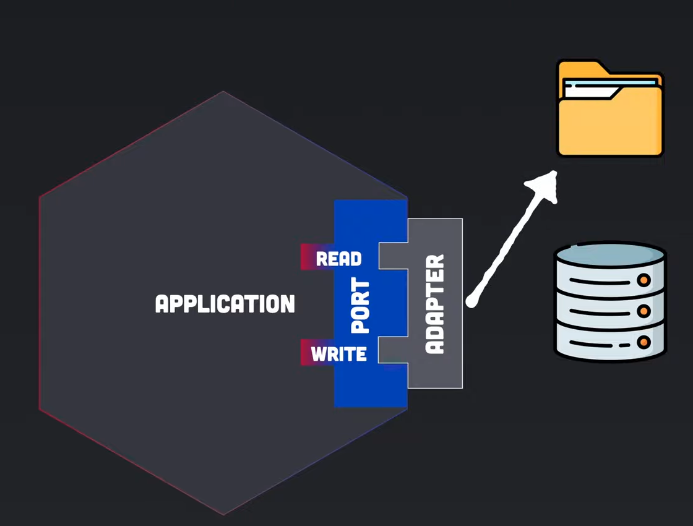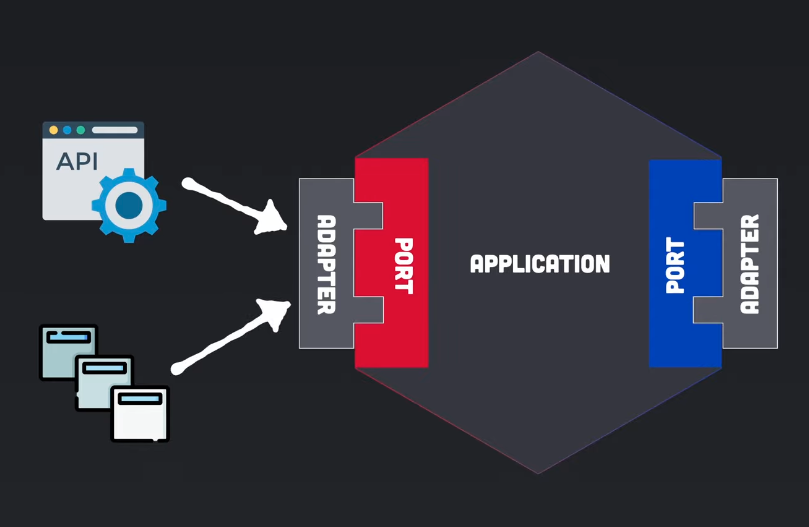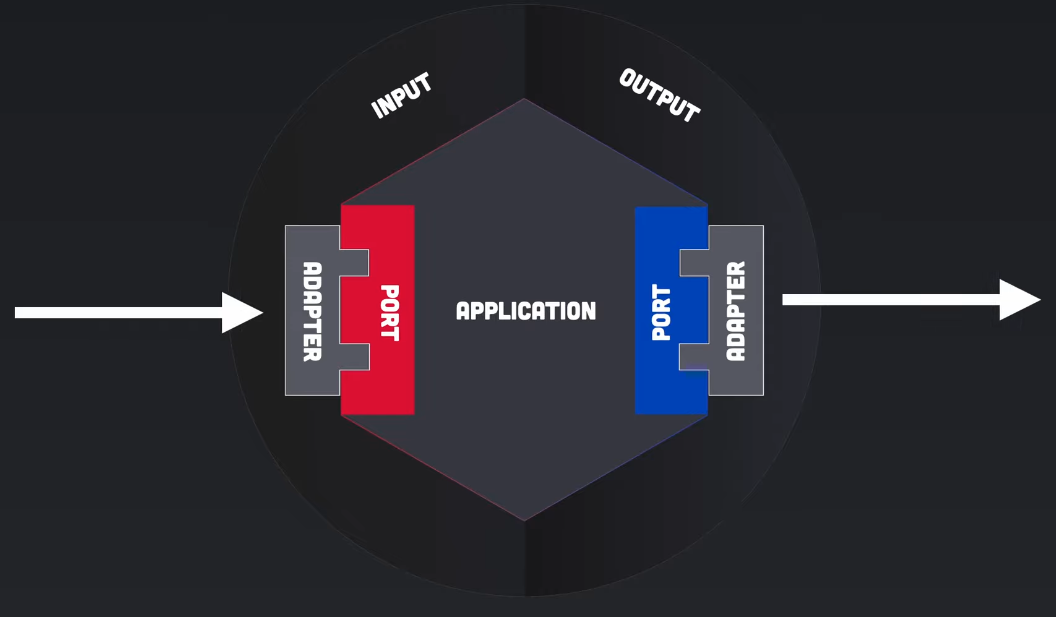Hexagonal Architecture
Definition
- 核心逻辑 Application Core
- 包括应用程序的业务规则和数据模型。
- 核心是独立于任何外部元素的,即不直接与数据库、用户界面等交互。
- 端口 Ports
- 是核心逻辑与外界通信的接口。
- 端口可以分为两类:输入端口和输出端口。
- 输入端口定义外部系统如何向应用程序发送数据(如 API 端点),输出端口定义应用程序如何将数据发送到外部系统(如数据访问接口)。
- 适配器 Adapters
- 连接端口和外部系统(如数据库、Web 服务器、消息队列)。
- 每种类型的外部交互都可以有一个或多个适配器,负责将外部调用转换为端口可以理解的格式,反之亦然。
Your application is hexagon with the middle of the hexagon making up the core logic of your application. For every input and output of your application we wang to create a port which is an abstraction. The abtraction is a way for your application to interact with the outside world without knowing anything about what it's interacting with.
Adapter is where th core logic happens to interact with the outside world which has implemented the abstraction (Read and write) for your hexagon application.

You can use for the output and also for the input.

Driving Side for input and Driven Side for output.

Pros and Cons
Pros
- Testability
- Maintainability
- Flexability
Cons
- Code complexity: More codes
- Running locally: Difficult to setup
- Performance: Latency in big project
Resources
- Hexagonal Architecture: What You Need To Know - Simple Explanation: https://www.youtube.com/watch?v=bDWApqAUjEI